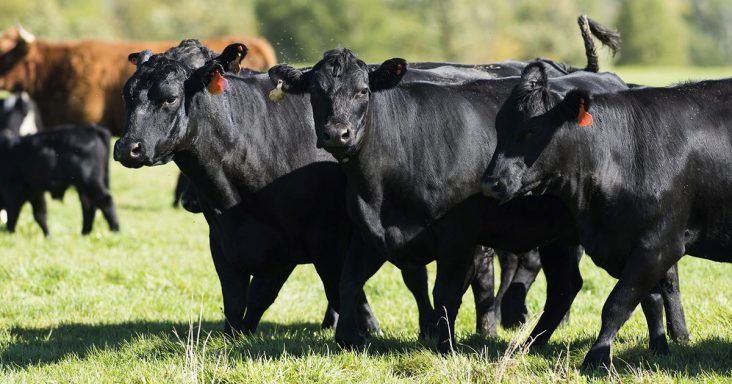Beef cattle inventories drop to lowest levels in more than half century
by February 23, 2023 2:01 pm 7,155 views

Beef cattle inventories across the United States are at their lowest level in more than six decades, according to the U.S. Department of Agriculture (USDA). Rising demand will mean long-term price hikes for consumers.
In its biannual cattle report, USDA reported a total of 89.3 million head as of Jan. 1, about 3% lower than the total reported a year ago, and the lowest since 2015. Beef cattle, bred specifically for slaughter and meat sales, declined 3.6%, to 28.9 million head, the lowest total recorded by the agency since 1962.
In “Cattle Market Notes Weekly,” a newsletter focused on the cattle industry, University of Kentucky’s Kenny Burdine and James Mitchell, extension livestock economist for the University of Arkansas System Division of Agriculture, said the decline came as no surprise.
“There was no question that the beef cow herd had gotten smaller,” Burdine and Mitchell said. “It was just a question of how much smaller.”
Global financial firm BTIG predicts that consumer beef prices will rise by 15% during the year, and prices will remain elevated in this cycle through 2025. While beef will be up, the report notes that poultry prices are predicted to drop by 9%.
For many U.S. livestock producers, 2022 offered a perfect storm of economic and weather-related challenges. Input costs such as diesel and fertilizer doubled and sometimes tripled in cost, and a hot, dry summer increased reliance on groundwater in the absence of rainfall. For cattle producers in particular, drought conditions offered no replenishment of dwindling forage supplies, leaving many to cull deeper into their herds than they might have otherwise preferred. Elevated beef cull prices contributed to an 11% increase in beef cow slaughter, according to the USDA.
Mitchell said the reduced supply combined with steady demand from the U.S. consumer at least meant greater profitability for producers with stock to sell.
“There is a pretty substantial biological lag in the beef supply chain,” he said. “What consumers experience at the grocery store is a product of what cattle producers were going through a year or two ago. It takes about two years for a new calf to become the steak on your dinner plate. To the extent that we’ve got historically low cattle stocks today, that will lead to tighter cattle production, which means potentially higher beef prices. From the perspective of cattle producers, this also means higher prices. The recent report from USDA just reinforces a bullish outlook on cattle prices for the next couple of years.”
The downward trend in cattle production does not appear likely to reverse in 2023. According to USDA’s cattle-on-feed data, the number of cows on feed as of Jan. 1 fell 4% from 2022 numbers, to about 14.2 million, marking the first year-over-year decline in beef production in eight years, Burdine and Mitchell said.
Arkansas typically ranks among the top 15 beef cattle producing states. There were nearly 1 million head of beef cattle/cows in the state in 2020, USDA reported. Beef is typically the fifth largest agri sector in Arkansas. It’s a nearly $1 billion industry in the state with about 24,000 farms. Roughly, 5.6 million acres is utilized in the industry, according to the Arkansas Farm Bureau.
